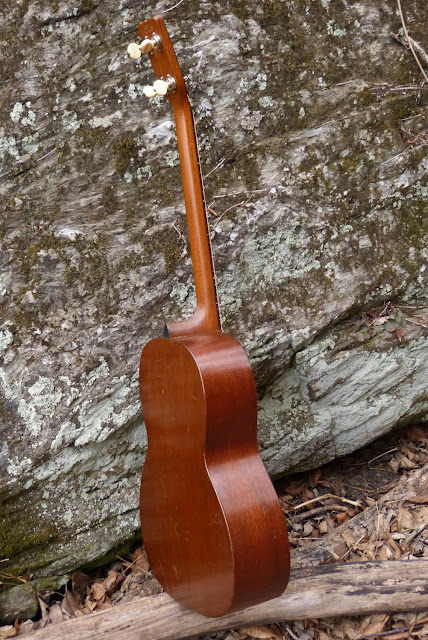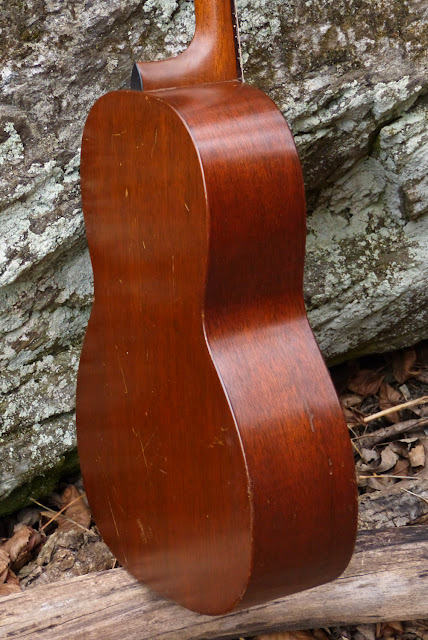1929 Martin 5-17T Tenor Guitar
While the bigger 0-sized Martin tenor guitars offer an advantage in low-end response and a little bit more overall volume, I like the way the smaller size 5 instruments have a voice that's a little more focused and features a bit of mandolin-style trill which sets them apart from a "regular guitar" tone. I think they suit standard CGDA tuning beautifully and do a very good job for "uke-centric" DGBE or GCEA tunings as well.
This one is a consignor's instrument and it's in extremely-good condition (save one 1/2" nick/hairline crack on the side) and all-original save one celluloid bridge pin (which is a replacement from my bins). It has minor use-wear and light scratching but looks great. My work on it included a fret level/dress, minor bridge and saddle work (see below), and a good setup with spot-on 1/16" action overall at the 12th fret.
This is the 14-fret version of the 5-17T (as opposed to the 12-fret version) but still has the cool geared banjo pegs as opposed to right-angle guitar-style tuners that replaced them a bit later. Specs-wise it's pretty normal for a size 5 tenor with an 11 1/4" lower bout, 23" scale, and 1 1/4" nut width. It has a solid mahogany body, top, and neck with Brazilian rosewood fretboard and bridge. The nut is ebony and it has its original saddle.
The headstock veneer is rosewood, too.
This has the old-style bar frets as opposed to t-style modern frets. The neck has a mostly-C, somewhat-V hybrid shape to it. It's comfortable and fast.
The understated style 17 at this time included only this one-ring rosette for ornamentation. The top and back are unbound and the finish is a thin, excellent-looking semi-gloss/glossier-satin.
Excuse the bad photo of the bridge -- it's a little blown-out. I did shave/recut the bridge very slightly because I found that despite the action being perfect on-arrival on the treble side (1/16"), I needed to modify it as Martin often "ramped" their bridges on tenor guitars and made them thicker (and thus the action higher) on the bass side. My modification was to flatten this out a bit more and adjust the saddle for better height on the bass side.
The bridge is still the same thickness as it was before on the treble side but I've sanded and polished-up the whole bridge to match what it looked like when it came in.
The back shows more general buckle-wear/button-wear in light scratching throughout.
Here's that tiny 1/2" nick/hairline crack on the bass-side near the waist. I squeezed glue into it and added a clamp but it was so tight that I'm sure that didn't do much. I can't even find it on the inside.
If you look really closely you can see a tiny spot of fill under the lowest (C) string just above the first fret. There was a nick-out here and I filled it to match and then buffed-up to match the rest of the board. I don't think anyone would notice at all unless I pointed it out.





















Comments